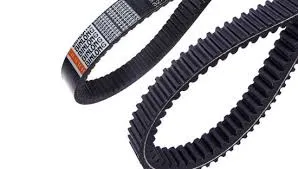- Arabic
- French
- Russian
- Spanish
- Portuguese
- Turkish
- Armenian
- English
- Albanian
- Amharic
- Azerbaijani
- Basque
- Belarusian
- Bengali
- Bosnian
- Bulgarian
- Catalan
- Cebuano
- Corsican
- Croatian
- Czech
- Danish
- Dutch
- Afrikaans
- Esperanto
- Estonian
- Finnish
- Frisian
- Galician
- Georgian
- German
- Greek
- Gujarati
- Haitian Creole
- hausa
- hawaiian
- Hebrew
- Hindi
- Miao
- Hungarian
- Icelandic
- igbo
- Indonesian
- irish
- Italian
- Japanese
- Javanese
- Kannada
- kazakh
- Khmer
- Rwandese
- Korean
- Kurdish
- Kyrgyz
- Lao
- Latin
- Latvian
- Lithuanian
- Luxembourgish
- Macedonian
- Malgashi
- Malay
- Malayalam
- Maltese
- Maori
- Marathi
- Mongolian
- Myanmar
- Nepali
- Norwegian
- Norwegian
- Occitan
- Pashto
- Persian
- Polish
- Punjabi
- Romanian
- Samoan
- Scottish Gaelic
- Serbian
- Sesotho
- Shona
- Sindhi
- Sinhala
- Slovak
- Slovenian
- Somali
- Sundanese
- Swahili
- Swedish
- Tagalog
- Tajik
- Tamil
- Tatar
- Telugu
- Thai
- Turkmen
- Ukrainian
- Urdu
- Uighur
- Uzbek
- Vietnamese
- Welsh
- Bantu
- Yiddish
- Yoruba
- Zulu
നവം . 10, 2024 20:09 Back to list
Exploring the Benefits and Applications of Flat Belt Conveyors in Industry
Understanding Flat Belts Applications, Advantages, and Key Considerations
Flat belts, a fundamental component in mechanical engineering and industrial applications, play a crucial role in the transmission of power and motion. Traditionally made from materials like leather, rubber, or fabric, these belts are flat in profile and designed to operate with pulleys to drive various machinery. Their simplicity and versatility make them a popular choice across a range of industries, from manufacturing to automotive.
The Basics of Flat Belts
At its core, a flat belt functions by transferring the rotational motion of a driving pulley to a driven pulley through friction. The belt wraps around the pulleys and relies on tension to maintain contact. The friction between the belt and the pulleys is essential for effective power transmission; therefore, materials that offer good grip while also being flexible are preferred in manufacturing flat belts.
Applications of Flat Belts
Flat belts are used in various applications due to their adaptability. Industries commonly employing flat belts include
1. Manufacturing In assembly lines, flat belts are used for conveyors that transport materials and products efficiently from one station to another.
2. Woodworking Machinery Equipment such as saws and planers often utilize flat belts to transfer power from electric motors to cutting mechanisms.
3. Textile Manufacturing Flat belts are found in weaving and spinning equipment, where they facilitate the precise movement of fabric and threads.
4. Cooling Towers and HVAC Systems Flat belts help drive fans and blowers, ensuring proper air circulation in temperature control systems.
Advantages of Flat Belts
Flat belts offer several distinct advantages
1. Simple Design The straightforward construction of flat belts allows for easier installation and maintenance compared to other types of belts, such as V-belts or synchronous belts.
flat belts

2. Low Noise Operation Flat belts typically operate with less noise, making them ideal for environments where noise pollution is a concern.
3. Cost-Effective They generally require less material than other types of belts, reducing manufacturing costs and making them a cost-effective option for industries.
4. Adjustable Tensioning The tension of flat belts can be easily adjusted, allowing for optimized performance, especially in situations where load variations occur.
5. Multiple Belt Drives Multiple flat belts can be used on a single set of pulleys, enabling complex machinery arrangements without requiring intricate systems.
Key Considerations
While flat belts have many advantages, there are important factors to consider when selecting and implementing them
1. Load Capacity Flat belts are not always ideal for high-load applications. Understanding the load requirements and choosing a belt with adequate capacity is crucial.
2. Slippage While flat belts generally have good frictional properties, they can slip under certain conditions, especially if they are worn or if the pulleys are misaligned.
3. Temperature Sensitivity Some materials used in flat belts may degrade under high temperatures, affecting their performance and lifespan.
4. Maintenance Regular inspection and tension adjustments are necessary to maintain optimal performance and prevent premature wear.
Conclusion
Flat belts continue to be an essential component of machinery across numerous industries. Their simplicity and adaptability cater to a wide range of applications, while advantages such as low noise and cost-effectiveness contribute to their popularity. However, careful consideration must be given to load capacities, maintenance, and the operational environment to ensure maximum efficiency and longevity of flat belts in industrial settings. Through innovation and advancements in material science, the future of flat belts looks promising, with potential improvements in performance and durability on the horizon.
-
Korean Auto Parts Timing Belt 24312-37500 For Hyundai/Kia
NewsMar.07,2025
-
7PK2300 90916-T2024 RIBBED BELT POLY V BELT PK BELT
NewsMar.07,2025
-
Chinese Auto Belt Factory 310-2M-22 For BMW/Mercedes-Benz
NewsMar.07,2025
-
Chinese Auto Belt Factory 310-2M-22 For BMW/Mercedes-Benz
NewsMar.07,2025
-
90916-02660 PK Belt 6PK1680 For Toyota
NewsMar.07,2025
-
drive belt serpentine belt
NewsMar.07,2025

